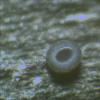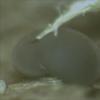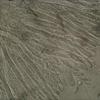
21-12-2025 09:32
Hello.A tiny ascomycete found embedded in wood in

22-12-2025 00:47
Patrice TANCHAUDBonsoir, récolte à proximité du milieu dunaire

21-12-2025 21:32
Pol DebaenstHello, Garden, Burgweg 19, Veurne, BelgiumOn 10/1

21-12-2025 21:40
Isabelle CharissouBonjour, j'aimerais connaitre les références de

21-12-2025 21:31
Pol DebaenstHello, Garden, Burgweg 19, Veurne, BelgiumOn 10/1

21-12-2025 21:31
Pol DebaenstHello, Garden, Burgweg 19, Veurne, BelgiumOn 10/1

20-12-2025 23:08
Patrice TANCHAUDBonsoir, récolte sur sol sablonneux dans l'arri�

20-12-2025 15:47
Mirek GrycHi.These grew on pine wood that was heavily covere

Found on a little peace of wood.
Disk: grey/blue layer with cream coloured edges; when top layer is removed the inside is white.
Asco: 8-spored; biseriate in rows of two; 54-62x4-5 um.
Spores: elliptical; 7.5-10.5x2.0-3.0 um
Paraphyses have a slightly rounded top.
The last photo is a little too much on the green side

Hello,
this is a Mollisia species.
No chance to say anything more, many details are lacking.
best regards,
Andreas


Hello Joop,
when I looked at the posting, the last four pictures weren't there ....
But nevertheless, at least the KOH reaction is important, though I believe that it should be negative here. In that case you will end up with Mollisia cinerea s.l., which still is an aggregation of very similar species were I have not the total clue for separating the different taxa.
You can do the KOH reaction macroscopically by putting a fragment of the hymenium in a drop of KOH 20% on a slide which is lying on a white sheet of paper. You then can see a yellow sap yielding from the fragment (KOH positive) - or no change of colour (KOH negative).
You can also do that microscopically by preparing a small piece of the hymenoum in a water mount and then adding KOH at the side of the cover slip. You can watch through the microscope when the KOH reached your piece of hymenium: The vacuolar bodies in the paraphyses will be dissolved rapidly by the KOH reaching these paraphyses. The dissolving will either result in a yellow colouration (positive) or the mount will stay completely colourless (negative).
best regards,
Andreas









